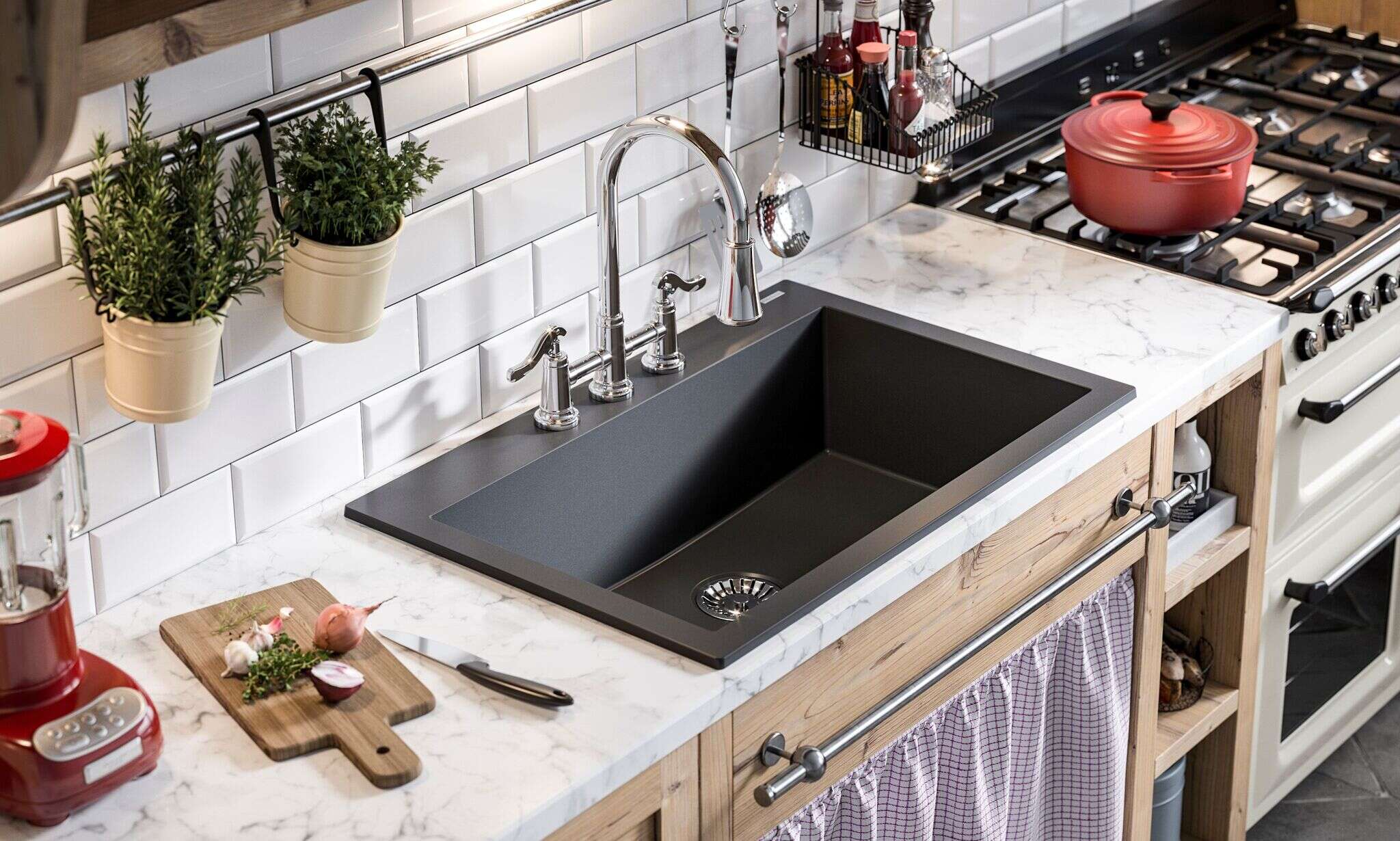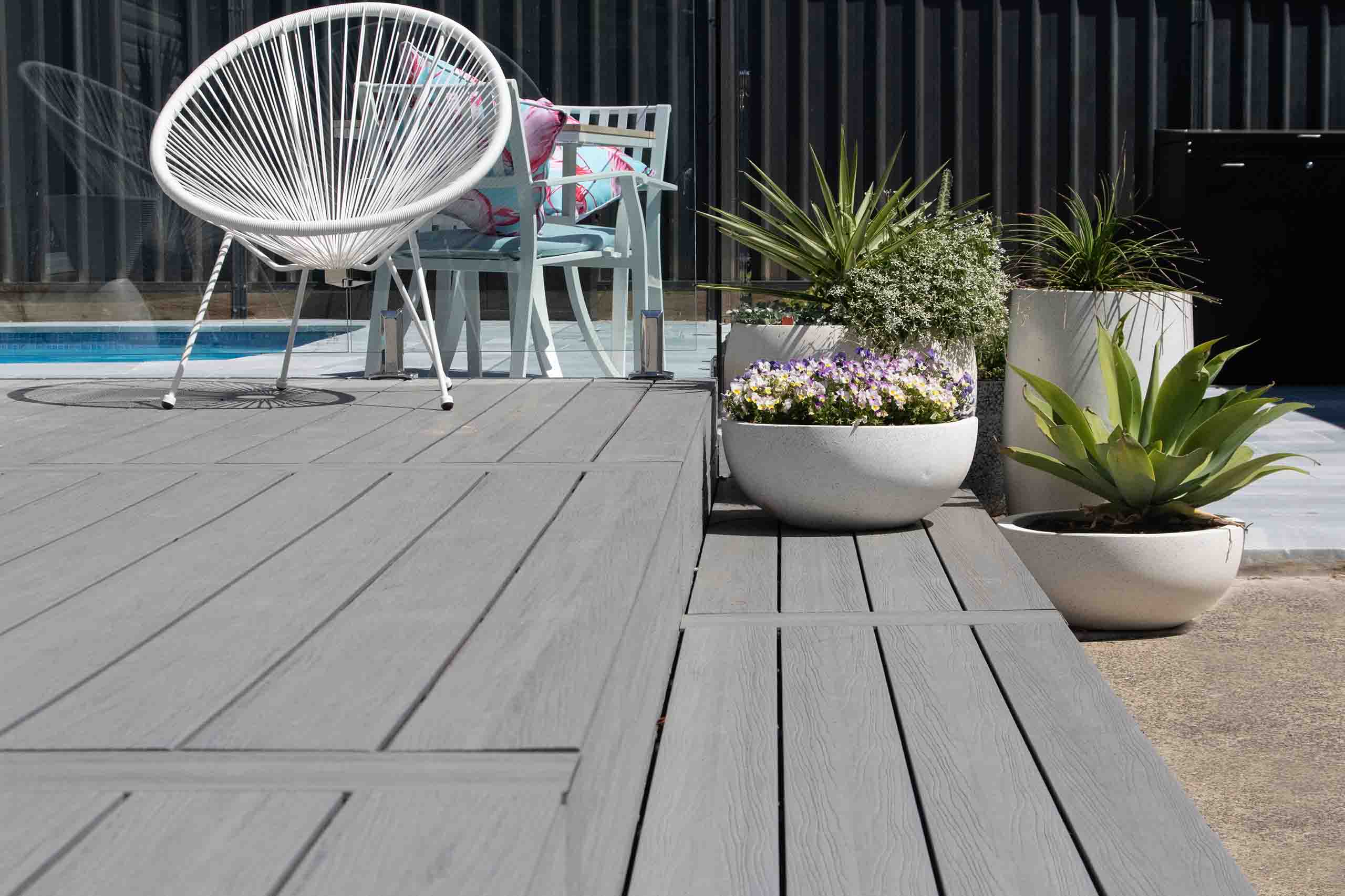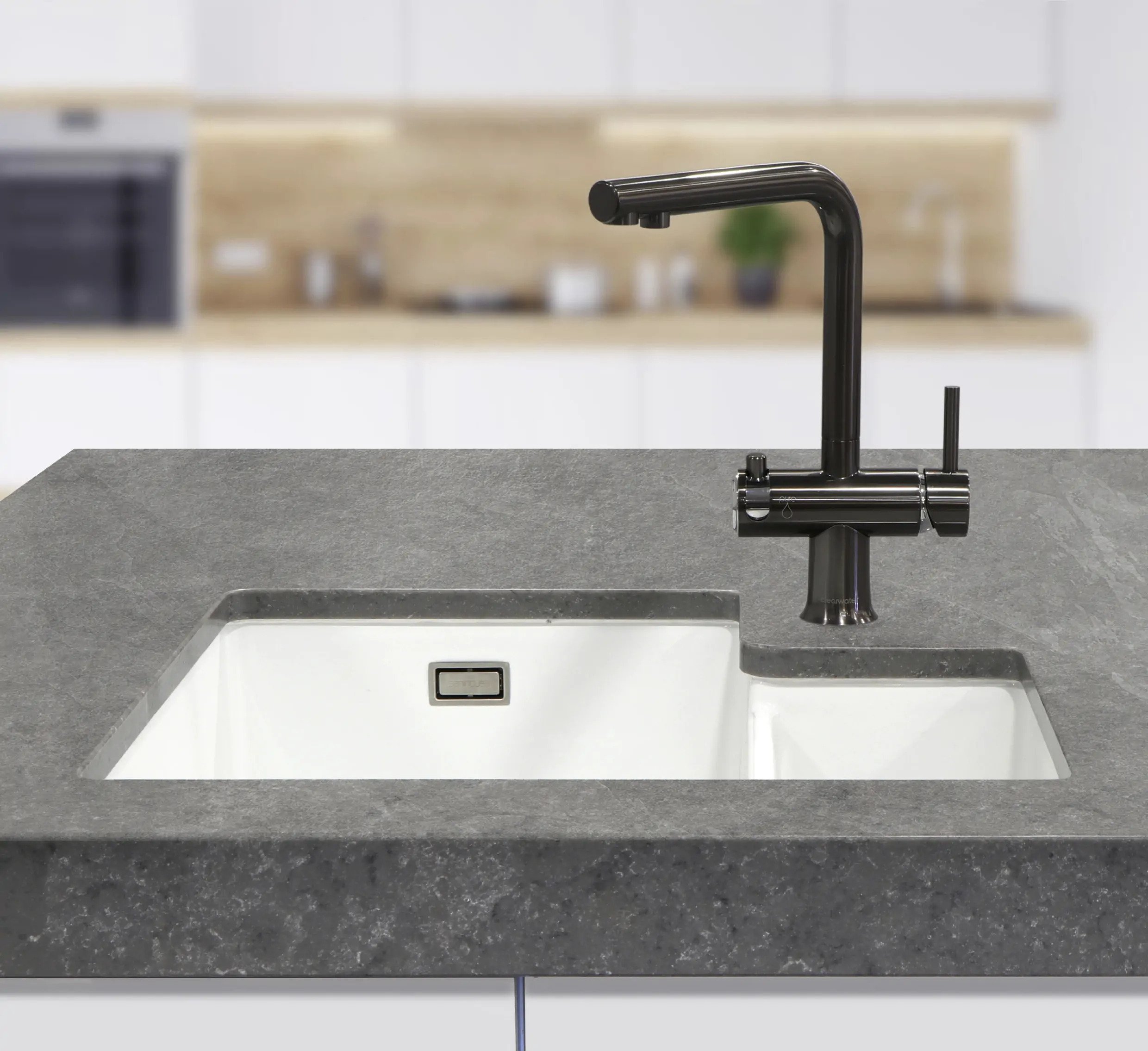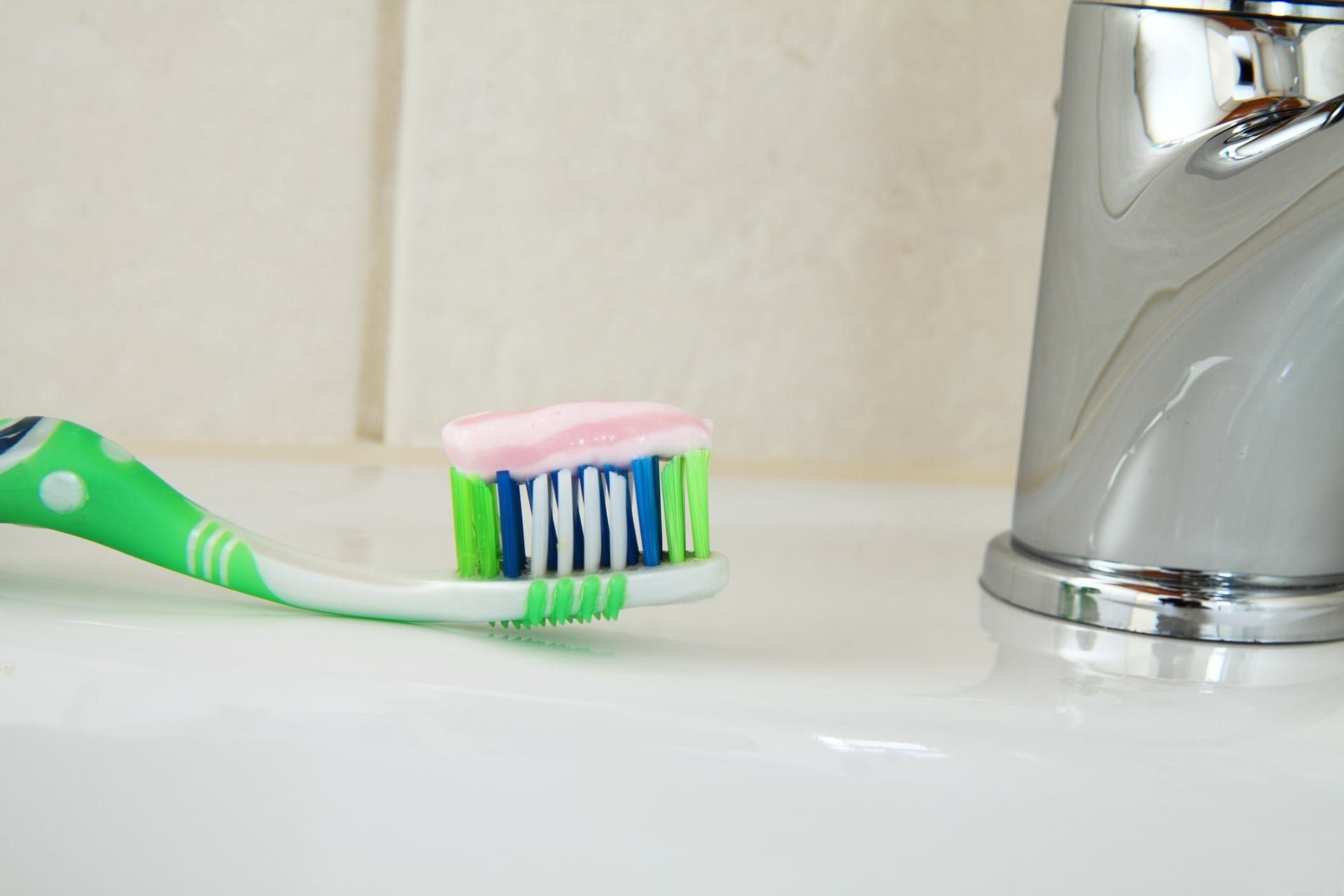

Articles
What Is A Composite Sink Made Of
Modified: October 29, 2024
Discover the key materials used in composite sinks with our informative article. Learn about the benefits and durability of these modern kitchen fixtures.
(Many of the links in this article redirect to a specific reviewed product. Your purchase of these products through affiliate links helps to generate commission for Storables.com, at no extra cost. Learn more)
Introduction
A sink is an essential component of any kitchen or bathroom, serving as a functional and aesthetic element. When it comes to choosing a sink, there are various materials available on the market. One popular and versatile option is a composite sink. In this article, we will explore what a composite sink is made of, its benefits, and how it compares to other types of sinks.
A composite sink refers to a sink that is made from a combination of materials. Unlike traditional sinks that are made from a single material, such as stainless steel or porcelain, a composite sink combines different materials to create a durable and visually appealing product.
Let’s dive deeper into the definition of a composite sink and explore the common materials used in their construction.
Key Takeaways:
- Composite sinks are made from a blend of natural minerals and acrylic resin, offering durability, versatility, and easy maintenance. They provide a cost-effective and stylish option for kitchens and bathrooms.
- Compared to traditional sink materials, composite sinks offer superior scratch and stain resistance, a wide range of design options, and excellent sound-dampening properties. They are a reliable and low-maintenance choice for homeowners.
Read more: What Is Composite Decking Made Of
Definition of a Composite Sink
A composite sink is a type of sink that is made from a blend of materials, typically combining a mixture of natural minerals and acrylic resin. The combination of these materials creates a strong, durable, and heat-resistant sink surface that is resistant to stains and scratches. Unlike traditional sinks, composite sinks offer a wide range of colors and textures, allowing homeowners to customize their kitchen or bathroom design.
The exact composition of a composite sink may vary depending on the manufacturer and specific product. However, the most common materials used in composite sinks include granite, quartz, and other natural minerals, which are blended with acrylic resin to form a solid surface.
Composite sinks are known for their seamless appearance, as the mixture of materials allows for smooth edges and uniform color throughout the sink surface. This creates a visually appealing and modern aesthetic that can complement a variety of kitchen or bathroom styles.
Now that we have a better understanding of what a composite sink is and the materials used in its construction, let’s explore the benefits of using composite materials in sinks.
Common Materials Used in Composite Sinks
Composite sinks are made from a combination of natural minerals and acrylic resin. These materials offer a variety of benefits that make composite sinks a popular choice for homeowners. Here are the most common materials used in the construction of composite sinks:
1. Granite
Granite is a natural stone that is known for its strength and durability. In composite sinks, granite particles are mixed with acrylic resin to create a sink surface that is resistant to heat, stains, and scratches. Granite composite sinks offer a unique and luxurious appearance with natural variations in color and texture.
2. Quartz
Quartz is another popular material used in composite sinks. It is an engineered stone made from a combination of natural quartz crystals and resin. Quartz composite sinks are highly resistant to heat, scratches, and stains. They are available in a wide range of colors and finishes to suit different design preferences.
Read more: How To Clean A Black Composite Sink
3. Silicate Materials
Composite sinks may also incorporate silicate materials like glass or ceramic particles. These materials add strength and durability to the sink surface. Silicate composite sinks are resistant to heat, stains, and scratches, making them ideal for busy kitchens or bathrooms.
4. Acrylic Resin
Acrylic resin is the binding agent that holds the composite materials together. It provides a smooth and non-porous surface that is easy to clean and maintain. Acrylic resin also enhances the overall durability of composite sinks, making them long-lasting and resistant to daily wear and tear.
These are just a few examples of the common materials used in composite sinks. The specific blend and ratio of materials may vary among different sink manufacturers. However, the combination of natural minerals and acrylic resin ensures that composite sinks offer both style and durability to homeowners.
Now that we understand the materials used in composite sinks, let’s explore the benefits of using composite materials in sink construction.
Benefits of Using Composite Materials in Sinks
Composite sinks offer numerous advantages when compared to traditional sink materials. The use of composite materials in sink construction provides homeowners with a range of benefits:
1. Durability
Composite sinks are highly durable and resistant to scratches, stains, and heat. The blend of natural minerals and acrylic resin creates a strong and robust surface that can withstand the demands of daily use. This durability ensures that composite sinks maintain their appearance and functionality for many years.
Read more: How To Clean Granite Composite Sink
2. Versatility and Design Options
Composite sinks come in a wide range of colors, textures, and finishes, providing homeowners with endless design options. Whether you prefer a sleek and modern look or a more natural and rustic aesthetic, there is a composite sink to complement any style of kitchen or bathroom. The versatility of composite materials allows for customization and ensures that you can find the perfect sink to suit your space.
3. Easy Maintenance
Composite sinks are non-porous, which means they are resistant to stains and bacteria growth. Their smooth surface makes cleaning a breeze, as dirt and residue can be easily wiped away. Unlike traditional sinks that may require special cleaning products or constant maintenance, composite sinks require minimal effort to keep them looking pristine.
4. Noise Reduction
Composite sinks have excellent sound-dampening properties, making them significantly quieter than stainless steel or porcelain sinks. The composite materials absorb vibrations, reducing the noise caused by running water, clattering dishes, and other activities in the sink.
5. Value for Money
While composite sinks may initially have a higher price tag than some traditional sink materials, their long-lasting durability and low maintenance requirements make them a cost-effective choice in the long run. You won’t have to worry about replacing or repairing your sink frequently, saving you both time and money.
Overall, the use of composite materials in sink construction provides homeowners with durability, versatility, easy maintenance, noise reduction, and value for money. Whether you’re renovating your kitchen or bathroom, a composite sink is an excellent choice that offers both style and functionality.
Now that we’ve explored the benefits of using composite materials in sinks, let’s compare composite sinks with other types of sinks to see how they measure up.
Read more: Best Granite Composite Sink For Your Kitchen
Comparison of Composite Sinks with Other Types of Sinks
When it comes to choosing a sink for your kitchen or bathroom, you’ll find a wide variety of options available. Let’s compare composite sinks with other popular types of sinks to understand their differences and advantages:
1. Stainless Steel Sinks
Stainless steel sinks are a common choice due to their affordability and sleek appearance. While stainless steel sinks are durable and resistant to staining, they can be prone to scratches and water spots. On the other hand, composite sinks offer superior scratch and stain resistance while providing a wider range of design options.
2. Porcelain Sinks
Porcelain sinks are known for their classic and elegant look. However, they can be prone to chipping and staining. Composite sinks, on the other hand, are highly durable and resistant to both chipping and staining, making them a more practical choice in terms of durability and maintenance.
3. Cast Iron Sinks
Cast iron sinks are heavy and durable but can be susceptible to chipping and scratches. They also require regular maintenance to prevent rusting and staining. Composite sinks offer similar durability but with greater resistance to chipping, scratching, and staining. Additionally, composite sinks are lighter in weight, making them easier to install.
Read more: What Is Composition Roof
4. Solid Surface Sinks
Solid surface sinks, made from materials like acrylic or polyester, offer seamless integration with countertop surfaces. They are durable and easy to clean. However, solid surface sinks can be less resistant to heat and scratches compared to composite sinks. Composite sinks provide similar seamless integration possibilities while offering increased durability and heat resistance.
5. Natural Stone Sinks
Natural stone sinks, such as granite or marble, offer a luxurious and unique look. However, they can be expensive and require regular sealing to maintain their appearance and prevent staining. Composite sinks provide a cost-effective alternative with similar durability and aesthetic appeal, while being easier to maintain and less prone to staining.
It’s clear that composite sinks offer numerous advantages over other types of sinks in terms of durability, maintenance, design options, and value for money. Whether you prioritize functionality, aesthetics, or both, composite sinks are an excellent choice for homeowners.
Now that we understand the comparison between composite sinks and other sink types, let’s move on to discussing the installation and maintenance of composite sinks.
Installation and Maintenance of Composite Sinks
Installing and maintaining a composite sink is relatively straightforward. Here are some guidelines to follow for proper installation and maintenance:
Installation:
- Measure the sink opening: Ensure that the opening in the countertop is suitable for the size and shape of your composite sink.
- Prepare the countertop: Smooth the edges of the countertop opening and ensure it is clean and free from any debris or old adhesive.
- Apply the adhesive: Follow the manufacturer’s instructions to apply a suitable adhesive or sealant to secure the sink in place. Make sure to evenly distribute the adhesive to ensure a secure bond.
- Position the sink: Carefully place the composite sink into the countertop opening, ensuring that it is level and centered correctly.
- Secure the sink: Apply pressure to the sink to ensure it is firmly bonded with the adhesive. Wipe away any excess adhesive and allow it to dry according to the manufacturer’s instructions.
Read more: What Is Composite Decking
Maintenance:
- Regular cleaning: Clean your composite sink regularly with a mild dish soap and warm water using a soft sponge or cloth. Avoid using abrasive cleaners or scrub brushes that can cause scratches.
- Stain prevention: While composite sinks are resistant to stains, it’s still important to promptly clean up any spills, especially from coffee, tea, or colored liquids that may leave a residue if left for an extended period.
- Avoid harsh chemicals: Avoid using harsh chemicals or abrasive cleaners that can damage the composite material. Stick to gentle, non-abrasive cleaners approved for composite surfaces.
- Protect from heat: While composite sinks are heat-resistant, it’s always a good idea to use a trivet or hot pad when placing hot pots or pans directly on the sink surface to prevent any potential discoloration or damage.
- Prevent scratching: Use a cutting board or mat when chopping or preparing food directly on the sink surface to prevent scratches. Avoid using sharp or abrasive objects on the sink.
By following these installation and maintenance tips, you can ensure that your composite sink remains in optimal condition and continues to enhance the functionality and aesthetic appeal of your kitchen or bathroom for years to come.
With all this information on installation and maintenance, we can now conclude our article on composite sinks.
Conclusion
Composite sinks offer a durable, stylish, and versatile option for kitchens and bathrooms. By combining natural minerals and acrylic resin, composite sinks provide numerous benefits over traditional sink materials such as stainless steel or porcelain.
The use of composite materials in sink construction ensures the durability of composite sinks, making them resistant to scratches, stains, and heat. With a wide range of colors, textures, and finishes available, composite sinks offer endless design options to suit any style preference.
Compared to other sink types, composite sinks stand out with their easy maintenance, noise reduction properties, and overall value for money. They are easy to clean, non-porous, and require minimal effort to keep them looking pristine. Additionally, composite sinks offer excellent sound-dampening capabilities, providing a quieter and more pleasant experience in the kitchen or bathroom.
During the installation of a composite sink, it is essential to follow the manufacturer’s instructions carefully. With proper installation and regular maintenance, composite sinks can maintain their durability and aesthetic appeal for years to come.
In conclusion, composite sinks are a reliable choice for homeowners looking for a durable, stylish, and low-maintenance sink option. Whether you’re renovating your kitchen or bathroom, a composite sink can be an excellent investment that combines functionality and aesthetics seamlessly.
So, if you’re looking to upgrade your sink, consider the benefits of a composite sink and discover the wide range of options available to enhance your space.
Frequently Asked Questions about What Is A Composite Sink Made Of
Was this page helpful?
At Storables.com, we guarantee accurate and reliable information. Our content, validated by Expert Board Contributors, is crafted following stringent Editorial Policies. We're committed to providing you with well-researched, expert-backed insights for all your informational needs.











0 thoughts on “What Is A Composite Sink Made Of”